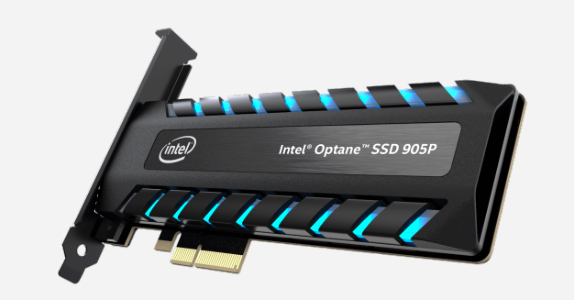Intel’s latest annual report signposted a delay in bringing second generation Optane SSD and DIMM products to full availability.
The report states: “With our Intel 3D NAND technology and Intel Optane technology, we are developing products to disrupt the memory and storage hierarchy. The 4th generation of Intel -based SSDs are scheduled to launch in 2020 with 144-layer QLC memory technology.”
It continues: “The 2nd generation Intel Optane SSDs for data centres are scheduled to start shipping samples in 2020, and are designed to deliver three times the throughput while reducing application latency by four times. In addition, the second-generation Intel Optane DC persistent memory is expected to achieve PRQ in 2020, and is designed for use with our future Intel Xeon CPUs.”

PRQ (Product Qualification Report) is an earlier stage in productisation than sample shipping. Therefore PRQ for gen 2 Optane DIMMs has not yet occurred and neither has sample shipping.
The QLC (4 bits/cell) SSDs were mentioned back in September and their 2020 ship date has not been altered.
Barlow Pass and Alder Stream
Back in September, Intel said it would release gen 2 Optane SSDs, code-named Alder Stream, and DIMMs, code-named Barlow Pass, in 2020. Now it is saying Alder Stream sample shipping will start in 2020, and Barlow Pass PRQ will take place this year also.
There is no mention of when the Barlow Pass Optane DIMMs will actually start sample shipping, or when full availability will start. That means it could be pushed as far back as 2021, as Tom’s Hardware has noted.
Optane chip manufacture
Intel confirmed it will still buy 3D XPoint chips from Micron, stating: “The next generation of Intel Optane technology and SSDs are being developed in New Mexico following the sale of our non-controlling interest in IMFT to Micron on October 31, 2019. We will continue to purchase product manufactured by Micron at the IMFT facility under established supply agreements.”
In other words there is nothing Intel wishes to say yet about having its own production fab for its Optane chips. Building a new fab would be a costly exercise, to the tune of billions of dollars.
We understand Micron’s X100 Optane product uses second generation XPoint technology. Essentially Intel has become an OEM of Micron, using its IMTF output. Until it builds its own XPoint fab, it will not be independent from Micron.
The 144 layer QLC chips are being manufactured at Intel’s Dalian plant in China. Gen 2 Optane is being developed at Intel’s Fab 11x in Rio Rancho, New Mexico, described as a centre of Optane technology advancement. Gen 3 Optane is also being developed there.







